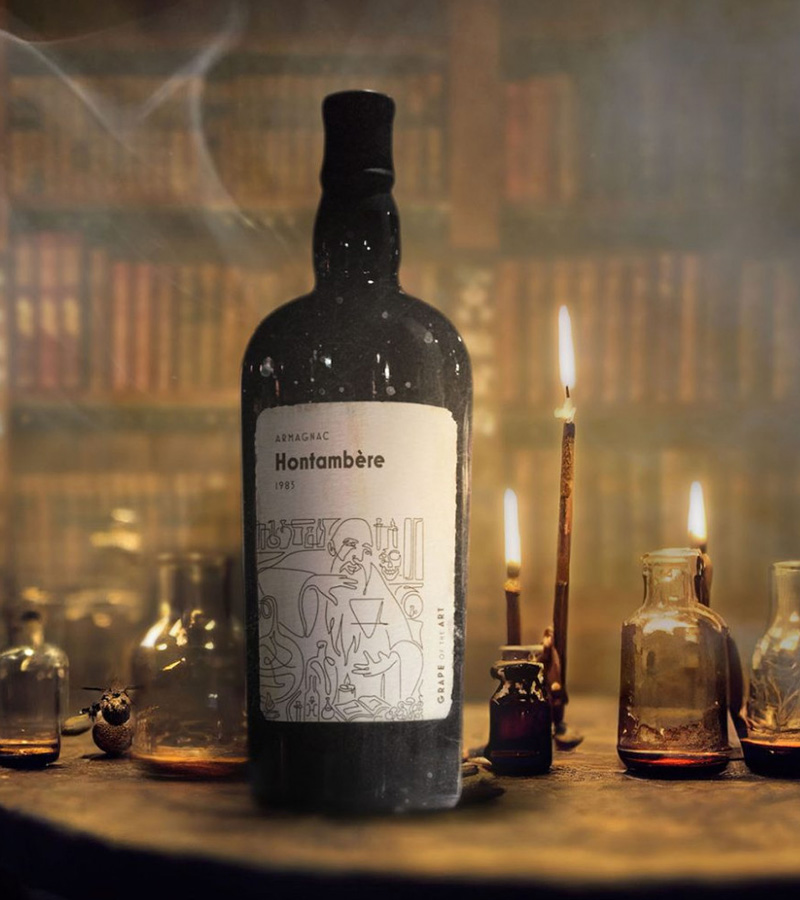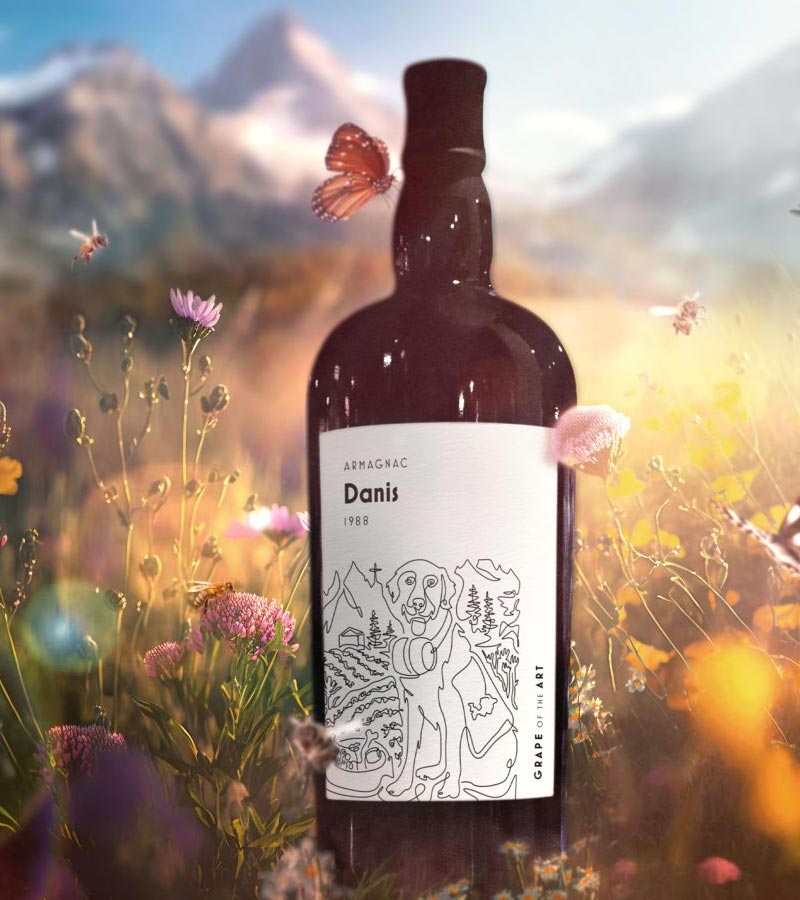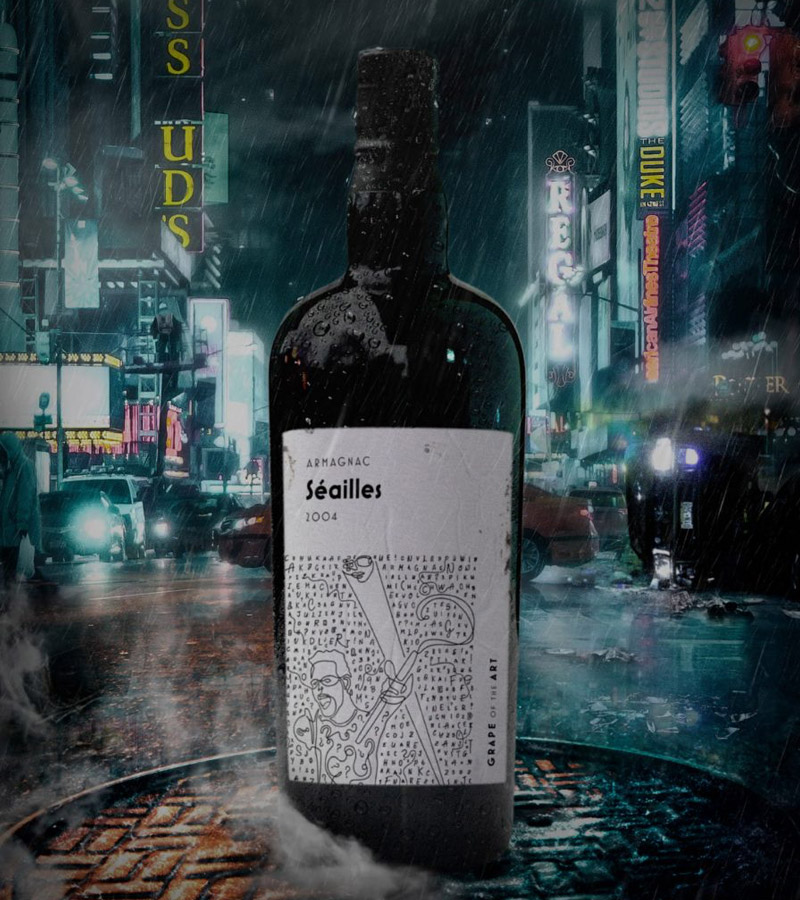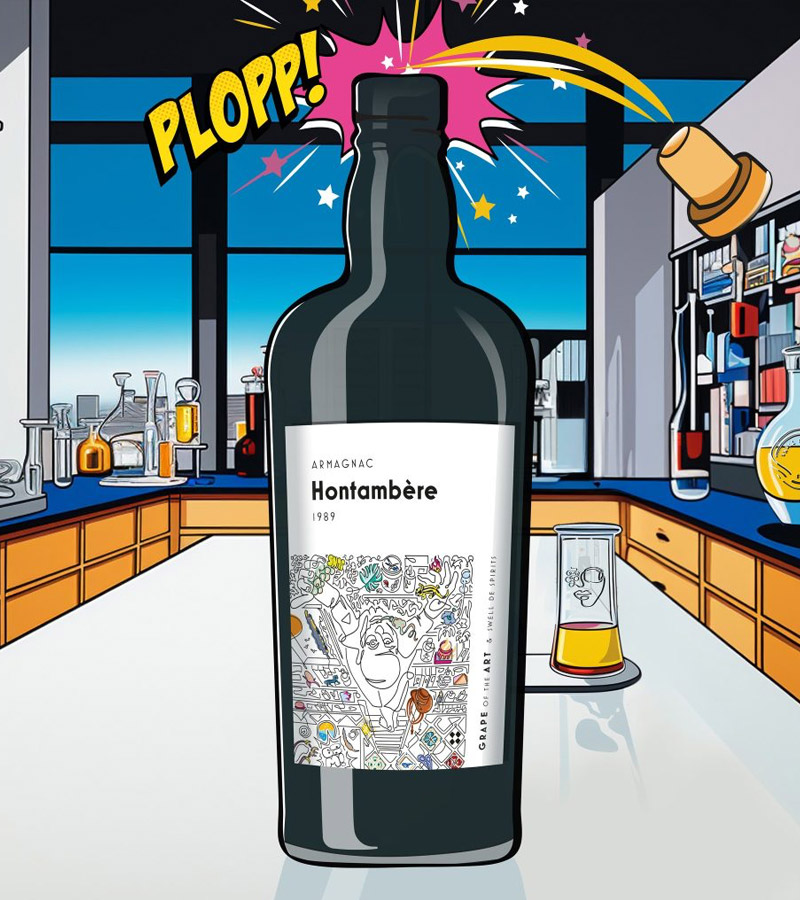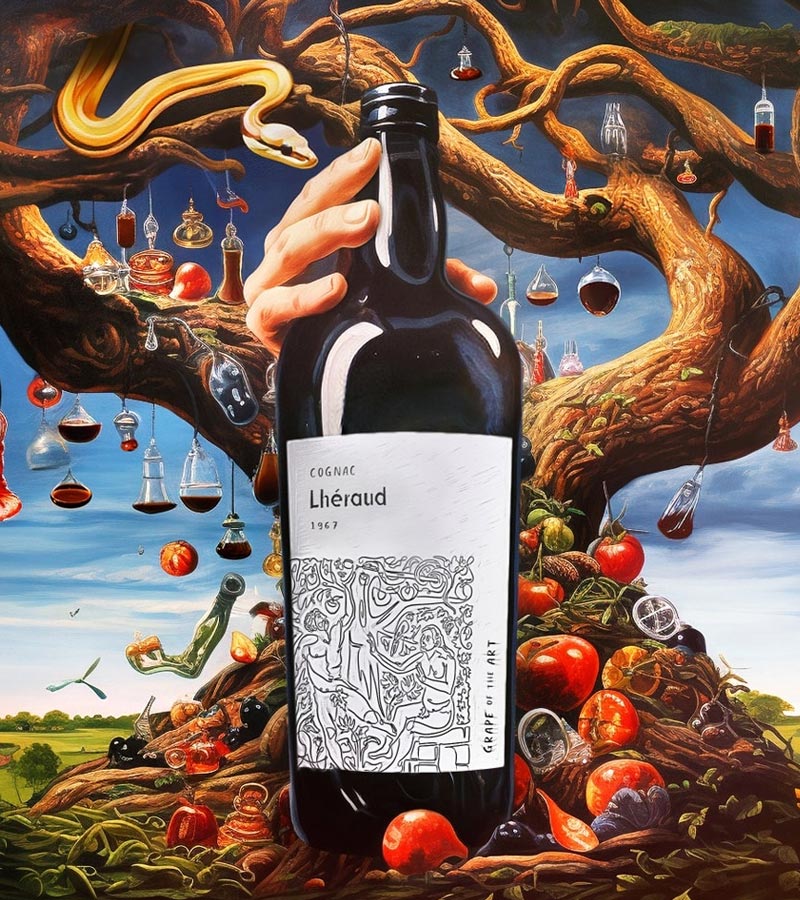
Bonjour Grape of the Art
Grape of the Art
2 new releases

Grape of the Art Hontambere 1983
Category: Armagnac Ténarèze
Producer: Hontambère
Age: 1983 Vintage - 39 Years Old
ABV: 54.2 % - Cask Strength
Grape variety: Ugni Blanc
Cellar climate: Dry cellar

Grape of the Art Espérance 2003
Category: Bas Armagnac
Producer: Espérance
Age: 2003 Vintage - 19 Years Old
ABV: 48.4 % - Cask Strength
Grape variety: Baco
Cellar climate: Semi humid cellar
Grape of the Art
Armagnac Hontambere 1983

Discover the release of the exquisite Grape of the Art Hontambère 1983, a gem from the storied cellars of Pouchégu and crafted by the renowned Pierre Laporte. This bottling, darker and richer than our beloved Hontambère 1985, offers a luxurious bouquet of Cuban tobacco, black molasses, and tropical Demerara glue, with a palate rich in raisin sweetness, dark chocolate, and mocha, all complemented by cherry and strawberry jam. As an esteemed online retailer, we are delighted to offer this limited edition from our Rare Armagnac Collection.
Available soon.
Don't miss this edition - sign up for an alert

Grape of the Art Hontambère 1983
Category: Armagnac Ténarèze
Producer: Hontambère
Age: 1983 Vintage - 39 Years Old
ABV: 54.2 % - Cask Strength
Grape variety: Ugni Blanc
Cellar climate: Dry cellar
Grape of the Art Hontambère 1983
Ténarèze
Cask #G4
Aged for 39 years in a dry cellar
54,2% Cask Strength
Ugni Blanc
Grape of the Art. Chateau de Hontambère is the Armagnac producer with whom they collaborated and from whose stock they made this excellent Armagnac selection.
Château de Hontambère is run by Sylvain Lafargue and Cindy Crighton. They grow all the typical Armagnac grape varieties, distill with a 100 year old column still, and always adhere to the philosophy - straight from the barrel, no additives, no colorants. Hontambère also purchases old and rare barrels from the region’s small grower-producers, such as the Domaine Pouchégu situated in the Ténarèze region of the Gers department. Domaine Pouchégu had been producing Armagnac from 1863 to 2014, until its master distiller Pierre Laporte fell seriously ill. Much of the producer’s stock ended up at Chateau de Hontambere, where the barrels remain under Sylvain’s and Cindy’s attentive care. This 1983 comes from Hontambère’s old Pouchégu stock.
Ténarèze
This 1983 Armagnac is made from 100% Ugni Blanc grapes. The profile of Pouchégu Armagnacs is said to be highly complex, sophisticated, full-bodied, powerful, oily, and with a strong signature from the barrel - and this is certainly the case again with this most recent Grape of the Art 1983 Hontambère edition. The Armagnac aged for thirty-nine years in a dry cellar, which stands out as a point of contrast to some of the previous Grape of the Art Hontambère bottlings. Like all bottlings from Grape of the Art and Chateau de Hontambere, it is bottled at its natural cask strength 54.2%. Of course, there are no additives whatsoever.
What?
Grape of the Art Hontambère 1983
Ténarèze
Cask #G4
Aged for 39 years in a dry cellar
54,2% Cask Strength
Ugni Blanc
Who?
Grape of the Art. Chateau de Hontambère is the Armagnac producer with whom they collaborated and from whose stock they made this excellent Armagnac selection.
Château de Hontambère is run by Sylvain Lafargue and Cindy Crighton. They grow all the typical Armagnac grape varieties, distill with a 100 year old column still, and always adhere to the philosophy - straight from the barrel, no additives, no colorants. Hontambère also purchases old and rare barrels from the region’s small grower-producers, such as the Domaine Pouchégu situated in the Ténarèze region of the Gers department. Domaine Pouchégu had been producing Armagnac from 1863 to 2014, until its master distiller Pierre Laporte fell seriously ill. Much of the producer’s stock ended up at Chateau de Hontambere, where the barrels remain under Sylvain’s and Cindy’s attentive care. This 1983 comes from Hontambère’s old Pouchégu stock.
Where?
Armagnac Ténarèze
How?
This 1983 Armagnac is made from 100% Ugni Blanc grapes. The profile of Pouchégu Armagnacs is said to be highly complex, sophisticated, full-bodied, powerful, oily, and with a strong signature from the barrel - and this is certainly the case again with this most recent Grape of the Art 1983 Hontambère edition. The Armagnac aged for thirty-nine years in a dry cellar, which stands out as a point of contrast to some of the previous Grape of the Art Hontambère bottlings. Like all bottlings from Grape of the Art and Chateau de Hontambere, it is bottled at its natural cask strength 54.2%. Of course, there are no additives whatsoever.
Reason for choosing
Grape of the Art selections from Chateau de Hontambère tend to be rich and hedonistic Armagnacs, full of character as well as many layers. And we have that here once again, so naturally we’re thrilled to have it on board.
The aroma shows a certain robustness and depth, filling the air with the smell of cedar wood, fine Cuban tobacco, and rich molasses. There's a hint of tropical Demerara sugar, with a distinct sweet glue note as well. There is a strong scent of incense and baskets full of juicy raisins and tart cherries.
An immediate strong sweetness from the raisins first, followed by the rich flavors of dark chocolate and mocha. The taste of cherry and strawberry jam adds a fruity touch to the overall flavor, making it feel full and satisfying.
Nose:
The aroma shows a certain robustness and depth, filling the air with the smell of cedar wood, fine Cuban tobacco, and rich molasses. There's a hint of tropical Demerara sugar, with a distinct sweet glue note as well. There is a strong scent of incense and baskets full of juicy raisins and tart cherries.
Palate:
An immediate strong sweetness from the raisins first, followed by the rich flavors of dark chocolate and mocha. The taste of cherry and strawberry jam adds a fruity touch to the overall flavor, making it feel full and satisfying.
Grape of the Art
Armagnac Espérance 2003

Double header! We are also thrilled to offer the vibrant Grape of the Art Espérance 2003 from Domaine d’Espérance, superbly led by Claire de Montesquiou, a direct descendant of the legendary musketeer d'Artagnan. This bottling is a delightful contrast to our darker selections, with a bouquet bursting with the brightest fruits like apricots, mirabelle plums, quinces, and yellow apples, complemented by spring flowers and a sweet touch of acacia honey, and a hint of lemon zest, evoking the essence of a young cognac.
Available soon.
Don't miss this edition - sign up for an alert

Grape of the Art Espérance 2003
Category: Bas Armagnac
Producer: Espérance
Age: 2003 Vintage - 19 Years Old
ABV: 48.4 % - Cask Strength
Grape variety: Baco
Cellar climate: Semi humid cellar
Grape of the Art Espérance 2003 Armagnac
Bas Armagnac
Cask #60
Aged for 19 years in a semi-humid cellar
48,4% Cask Strength
Baco
Grape of the Art. Domaine d’Espérance is the Armagnac producer with whom they collaborated and from whose own stock they made this excellent Armagnac selection.
Domaine d'Espérance is a distinguished Armagnac producer located in the heart of the Grand Bas Armagnac region in Gascogne, France, about an hour and a half from Bordeaux. Acquired in 1990 by Jean-Louis and Claire de Montesquiou, the estate was revitalized by the couple who passionately restored its renown. The couple initially focused on wine production while allowing the Armagnac to age gracefully.
Today, the Domaine is celebrated for its exceptional vintages and blends, which have garnered numerous medals at the Paris Agricultural Competition (one of France’s most respected and cherished awards to possess), among so many others. The entire process, from vine growing to distillation and barrel aging, is meticulously overseen by a dedicated team, ensuring the best Armagnac ends up in bottle and then in our glasses.
Bas Armagnac
This 2003 Armagnac is made from 100% Baco grapes. The Armagnac aged for nineteen years in cask N°60 resting in a semi-humid, temperate cellar. Like all bottlings from Grape of the Art, it is bottled at its natural cask strength 48.4%. Of course, there are no additives whatsoever.
What?
Grape of the Art Espérance 2003 Armagnac
Bas Armagnac
Cask #60
Aged for 19 years in a semi-humid cellar
48,4% Cask Strength
Baco
Who?
Grape of the Art. Domaine d’Espérance is the Armagnac producer with whom they collaborated and from whose own stock they made this excellent Armagnac selection.
Domaine d'Espérance is a distinguished Armagnac producer located in the heart of the Grand Bas Armagnac region in Gascogne, France, about an hour and a half from Bordeaux. Acquired in 1990 by Jean-Louis and Claire de Montesquiou, the estate was revitalized by the couple who passionately restored its renown. The couple initially focused on wine production while allowing the Armagnac to age gracefully.
Today, the Domaine is celebrated for its exceptional vintages and blends, which have garnered numerous medals at the Paris Agricultural Competition (one of France’s most respected and cherished awards to possess), among so many others. The entire process, from vine growing to distillation and barrel aging, is meticulously overseen by a dedicated team, ensuring the best Armagnac ends up in bottle and then in our glasses.
Where?
Bas Armagnac
How?
This 2003 Armagnac is made from 100% Baco grapes. The Armagnac aged for nineteen years in cask N°60 resting in a semi-humid, temperate cellar. Like all bottlings from Grape of the Art, it is bottled at its natural cask strength 48.4%. Of course, there are no additives whatsoever.
Reason for choosing
The yin to the 1983 Hontambère's yang. One of our favorite Grape of the Art releases was the 1988 from Domaine de Danis. And with this 2003 Esperance, while younger, we have an Armagnac heading more in the fresher and brighter springtime direction. As Cognac lovers first and foremost, we find so much to like here.
The aroma is a stark contrast to the darker and richer Hontambère 1983, bursting with bright fruits like apricots, mirabelle plums, quinces, and yellow apples. It's very evocative of spring, with flowers blooming and a sweet scent of acacia honey in the air. There’s also a hint of lemon zest adding a fresh touch. It is somewhat Cognac-like in nature, but that of a younger, fresher, and crisper Cognac.
The bright fruits gently tickle your tongue with their freshness. The sweetness of honey adds cushion and contributes soft sweet flavors, while a subtle acidity brings everything into balance, making for an exciting and well-rounded flavor experience.
Nose:
The aroma is a stark contrast to the darker and richer Hontambère 1983, bursting with bright fruits like apricots, mirabelle plums, quinces, and yellow apples. It's very evocative of spring, with flowers blooming and a sweet scent of acacia honey in the air. There’s also a hint of lemon zest adding a fresh touch. It is somewhat Cognac-like in nature, but that of a younger, fresher, and crisper Cognac.
Palate:
The bright fruits gently tickle your tongue with their freshness. The sweetness of honey adds cushion and contributes soft sweet flavors, while a subtle acidity brings everything into balance, making for an exciting and well-rounded flavor experience.

Robert, Oliver, Sascha, Christian and Leonard - the 5 friends behind Grape of the Art
About Grape of the Art
An independent bottler specializing in Armagnac and Cognac single casks, Grape of Art are made up of five partners: Oliver Gerhardt, Christian Maier, Leonard Stumpf, Sascha Junkert, and Robert Bauer.
The concept of Grape of the Art was born during a blind tasting of their rum and whiskey group in Stuttgart, Germany, where they were amazed by the excellence and diversity of Armagnac. So Grape of the Art began tasting an Armagnac and their first release, “Domaine Le Frêche,” was a 13-year-old Armagnac. After the Stuttgart tasting, they dove into the world of brandy and found that there were few bottlings on the German market that met their expectations of unadulterated, undiluted single barrels.
Their curiosity and exploration eventually led them to the region of Armagnac & Cognac, where they were fortunate to meet remarkable people who gave them the opportunity to taste their distillates directly from the barrel. We work closely with GotA and we are happy to introduce the bottles to an international audience. With a commitment to selecting state of the art barrels being a first priority – dressing the bottles with a fresh and modern image is also a key focus in making the Grape of Art collection stand out. In doing so, the team works closely with their designer, Theresa, putting creative time and energy into making fun bottles and fine-tuned labels.
The Art of Tasting
Upon meeting with many welcoming producers of the Cognac and Armagnac regions, they were able to enter the warehouses and taste the distillates straight from the cask.
Bringing individual strengths and skills to the project, they make up a coherent and mutually complementary team, which despite having different tastes and spirit focuses, almost always have the same favorites in a blind tasting.
When it comes to shortlisting a barrel however, as a general rule, at least 4 out of 5 of the group must be enthusiastic about what they are tasting in order for the Grape of Art promise of quality to be ensured. After exploring the barrel cellars and leaving the site at the producer’s, the five take samples of the best barrels home. At home, these are then divided up and each team member tastes them again blindly and impartially, together with reference bottlings for themselves.
Then, in the final round of the tasting, the five come together to taste them again and make the final decision. With this approach, the warehouse emotions and the influence of age, brand or alcohol strength move into the background and objectivity increases. And while each member of the team takes different responsibilities when it comes to barrel selection and label artwork, they always make the final decision together.
So with such a rigorous tasting process, guaranteeing fine quality selections and with a fresh new aesthetic giving spirits that are steeped in tradition a contemporary twist – what more could be asked of an independent bottler?
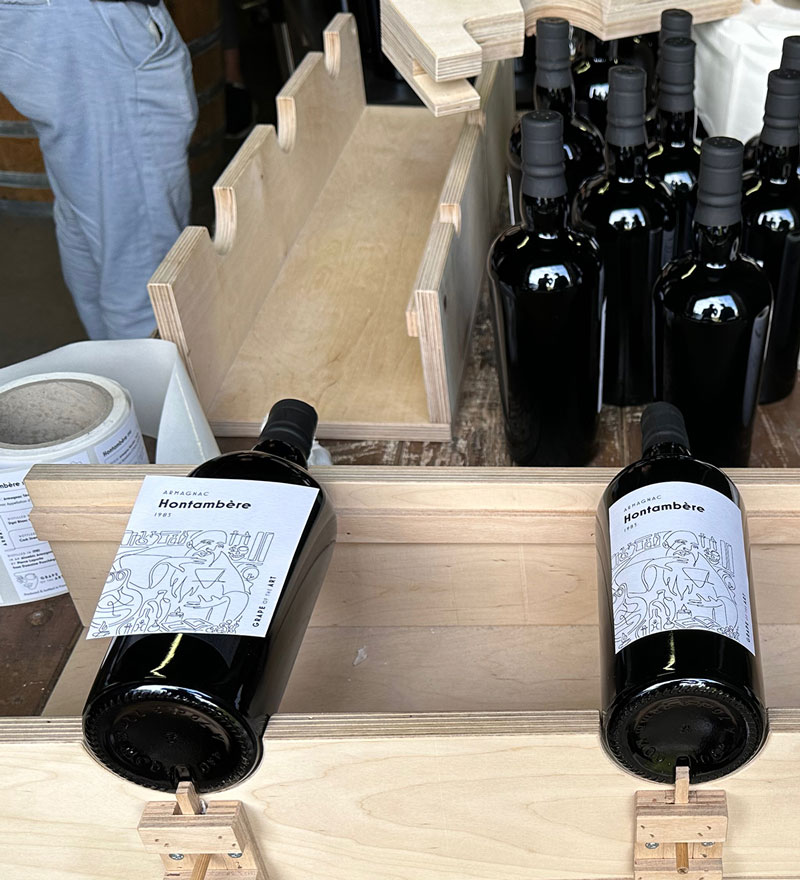



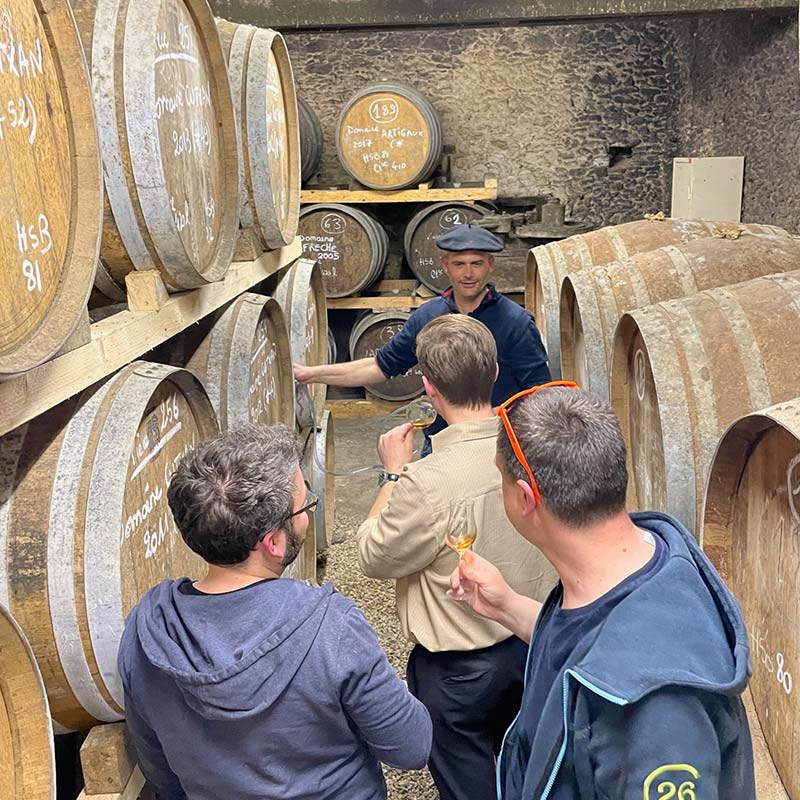


More Bottlings: Grape of the Art
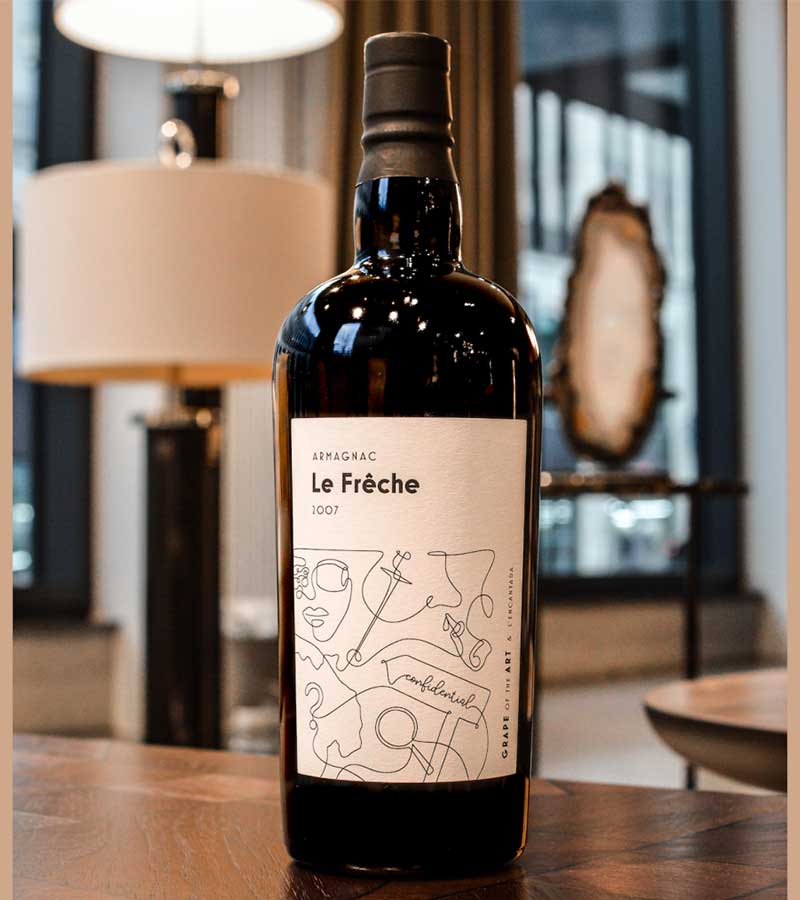
La Frêche 2007 Armagnac
Sold out.

Séailles 1988 Armagnac
Sold out.

Jean-Luc Pasquet 68-72
Sold out.
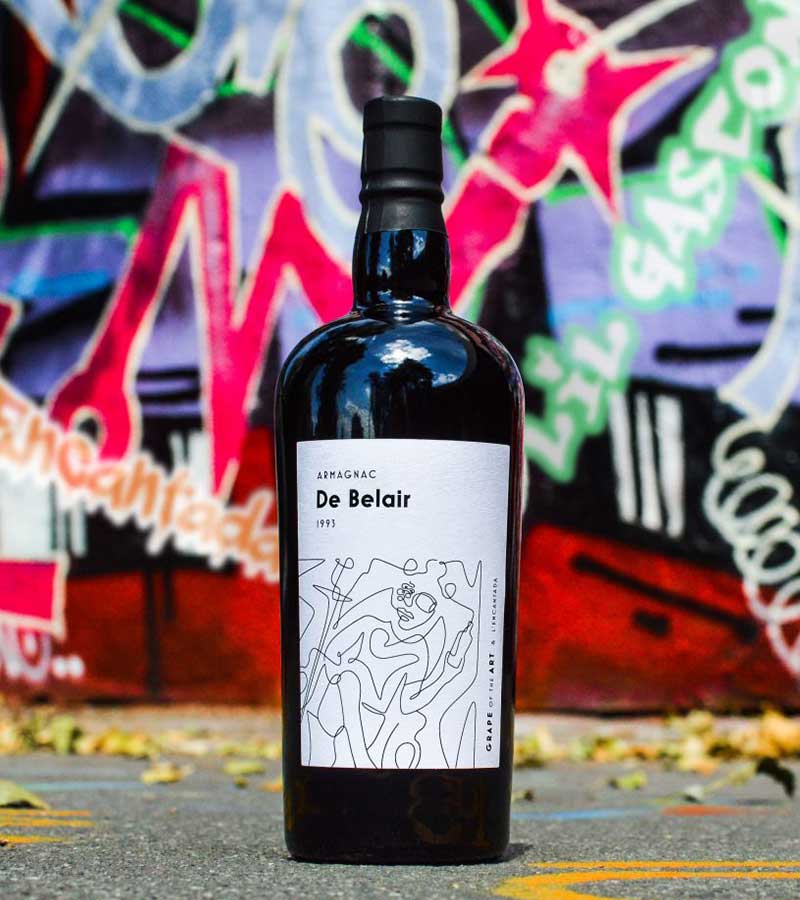
De Belair 1993 Armagnac
Sold out.

Cuxtan 2006 Armagnac
Sold out.

Séailles 2000 Armagnac
Sold out.

